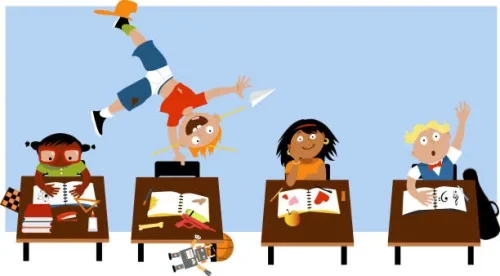Managing hyperactivity in children can be challenging for parents and caregivers, but with the right strategies and professional support, it is entirely manageable. Hyperactivity often affects a child’s focus, behavior, and social interactions, making daily routines and learning more difficult. Therapy-based interventions play a crucial role in addressing these challenges by providing structured support tailored to each child’s unique needs.
At the core of effective management are targeted therapies such as occupational therapy, behavioral therapy, and play therapy. These approaches help children develop self-regulation, improve attention, and enhance social and emotional skills. Additionally, therapy empowers parents with practical strategies to reinforce positive behaviors at home and create a supportive environment for growth. Early intervention and personalized therapy plans are key to long-term success, helping children reach their full potential while fostering confidence and well-being.
What is Hyperactivity in Children ?
Hyperactivity in children refers to a pattern of excessive movement, impulsive actions, and difficulty maintaining attention. It goes beyond the usual energy children have and may interfere with their daily functioning. Some common hyperactive child symptoms include:
- Difficulty staying seated, even in calm settings like classrooms
- Talking excessively or interrupting conversations
- Acting impulsively without considering consequences
- Struggling to complete tasks or follow instructions
- Fidgeting, restlessness, or constantly moving from one activity to another
Hyperactivity may appear differently depending on a child’s age, temperament, and environment. While some children show physical hyperactivity, others may experience mental restlessness, making it harder for them to focus on tasks or listen attentively.

What Causes Hyperactivity in Children?
Understanding the root causes is essential when learning how to control a hyperactive child effectively. Hyperactivity can arise from several factors:
- Attention Deficit Hyperactivity Disorder (ADHD): A common neurodevelopmental disorder that affects attention, self-control, and activity levels.
- Emotional or Psychological Stress: Anxiety, trauma, or emotional stress can trigger hyperactive behavior.
- Sleep Problems: Insufficient or irregular sleep can increase restlessness and impulsivity.
- Dietary Factors and Nutrition: Deficiencies in key nutrients or excessive sugar intake may exacerbate hyperactive tendencies.
- Environmental Influences: Overstimulation, lack of structured routines, or chaotic environments can make hyperactivity worse.
Early assessment by pediatricians or child therapists is critical to identify the exact causes and ensure that interventions are tailored to your child’s needs.
Step 1: Recognize and Record Behavior Patterns
Before implementing strategies, keep track of your child’s behavior. Document the times, situations, and triggers for hyperactivity. This helps parents understand patterns and share accurate information with therapists.
- Maintain a behavior journal noting what triggers hyperactivity and what calms the child
- Observe whether symptoms worsen during certain times of day or in specific environments
- Track improvements after introducing interventions
Step 2: Create a Structured Routine
One of the most effective ways to deal with a hyperactive child at home is by creating a predictable daily routine. Structured schedules reduce uncertainty, which often triggers hyperactive behavior. Tips include:
- Set fixed times for meals, play, study, and sleep
- Use visual schedules or charts to help children follow routines independently
- Break tasks into smaller, achievable steps to avoid frustration
- Include frequent short breaks to release excess energy
Step 3: Encourage Physical Activity and Outdoor Play
Physical activity is a vital outlet for hyperactive children. Exercise helps them channel energy positively, improves focus, and promotes better sleep. Some suggestions include:
- Daily outdoor play like running, cycling, or ball games
- Martial arts or yoga for discipline and body awareness
- Swimming or dancing to enhance coordination and stamina
- Short movement breaks during study periods to prevent restlessness
Step 4: Use Positive Reinforcement and Behavior Strategies
Children with hyperactivity respond well to encouragement and consistent guidance. Positive reinforcement helps strengthen desired behaviors while minimizing negative patterns.
- Praise your child for completing tasks or following instructions
- Reward focused behavior with small incentives or privileges
- Avoid harsh punishment, as it can increase anxiety and worsen hyperactivity
- Teach self-monitoring skills by helping your child recognize when they feel restless

Step 5: Therapy-Based Interventions
Professional therapy is often the most effective way to manage hyperactivity in children. At Nurturers, we provide customized programs, including:
Occupational Therapy (OT)
Occupational Therapy focuses on helping children develop self-regulation, sensory processing, and fine motor skills. Children with hyperactivity often struggle to control their impulses and may have difficulty coordinating their movements or completing tasks. OT sessions may include:
- Sensory Integration Activities: Techniques to help children process sensory input, such as touch, sound, and movement, reducing overstimulation and restlessness.
- Fine Motor Skill Development: Exercises to improve hand-eye coordination, handwriting, and the ability to handle small objects effectively.
- Daily Living Skills: Teaching children to manage everyday tasks, like dressing, eating, or organizing their workspace, in a structured manner.
Behavioral Therapy
Behavioral Therapy is essential for teaching children self-control, focus, and coping strategies. It addresses impulsivity and encourages positive behaviors through structured interventions:
- Cognitive Behavioral Techniques (CBT): Helps children understand the connection between thoughts, feelings, and actions, enabling them to manage impulsive behaviors.
- Behavior Modification Programs: Uses rewards, reinforcement, and consistent guidance to encourage desirable behaviors and reduce disruptive ones.
- Social Skills Training: Teaches children how to interact appropriately with peers, share, take turns, and respond to social cues effectively.
Play Therapy
Play Therapy uses structured play to promote emotional regulation, problem-solving, and social development. Children often express feelings and learn coping mechanisms better through play than verbal communication alone. Techniques may include:
- Role-Playing Games: Helps children understand emotions, practice empathy, and develop communication skills.
- Creative Play: Art, building blocks, or storytelling to enhance focus, creativity, and self-expression.
- Interactive Play: Encourages teamwork, patience, and sharing while helping children manage their hyperactive energy positively.
Parent Training Programs
Parents play a critical role in reinforcing therapy strategies at home. Our Parent Training Programs equip caregivers with tools and techniques to support their child’s development:
- Behavior Management Techniques: Step-by-step guidance on how to handle impulsivity, set boundaries, and reinforce positive behavior.
- Creating Structured Home Environments: Advice on routines, organization, and calming strategies to support therapy goals.
- Regular Progress Reviews: Parents learn how to monitor improvements, track behavior, and communicate effectively with therapists.
- Support and Counseling: Guidance for parents to manage stress and stay consistent while handling a hyperactive child.
Therapy ensures that children not only manage hyperactive behaviors but also develop essential skills for academic and social success.
Step 6: Create a Calm, Organized, and Stimulating Environment
A hyperactive child benefits from an environment that balances calmness and structured stimulation:
- Limit noise and distractions in study or therapy areas
- Use color-coded or organized spaces for learning activities
- Introduce calming techniques such as deep breathing, mindfulness, or sensory activities
- Avoid overstimulating activities or screen time close to bedtime
Step 7: Nutrition and Lifestyle Adjustments
A child’s diet and lifestyle can influence hyperactivity. Consider these approaches:
- Provide a balanced diet rich in protein, fruits, vegetables, and whole grains
- Limit sugary snacks, processed foods, and artificial additives
- Encourage consistent sleep schedules and proper rest
- Promote hydration and outdoor exposure for natural energy balance
Step 8: Monitor Progress and Adjust Strategies
Every child responds differently to interventions. Regular monitoring allows parents and therapists to refine strategies and maximize effectiveness:
- Maintain a progress journal to track improvements and setbacks
- Adjust routines and therapy approaches as your child grows
- Celebrate milestones to build confidence and reinforce positive behavior
Conclusion
Managing hyperactivity in children effectively requires understanding, patience, structured routines, therapy, and a supportive environment. By recognizing hyperactive child symptoms, identifying underlying causes, and implementing targeted strategies, parents can significantly improve their child’s focus, behavior, and overall well-being.
At Nurturers, we specialize in providing therapy programs that help children thrive, build self-regulation, and channel their energy positively. If you’re looking for guidance on how to deal with a hyperactive child at home or professional strategies for how to control hyperactive child behavior, our expert team is here to support you every step of the way.

